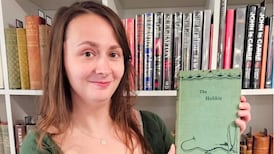At the beginning of this century birth announcements appearing in The Irish Times gave no information on the names chosen by the parents for their children. A typical notice might have read: "On 3rd January, 1901, at Hampton House, Howth, the wife of D.K. Smith, Solicitor, of a son." Only later in the century did the practice of including the children's names develop, so, for the early period, this survey draws on sources such as the 1901 Census and also a referred process from the engagements and wedding announcements in this newspaper. Otherwise, the main source for this survey is the The Irish Times births announcements, which started giving names of the babies from the early 1920s.
The top names chosen for middle-class Irish children in the first half of the century reflected a community holding to old values and traditions and resisting any great change. For girls, Mary was by far the most popular name in the period, and, with Elizabeth, Margaret and Anne, it dominated the list into the 1950s. John easily topped the boys' charts during the same period, with James, Patrick, Robert and Thomas also finding favour.
Considerable social and cultural change had taken place in Ireland by the 1970s, and the girls' Top 10, in particular, reflected a different society. The traditional names had been superseded by names such as Fiona and Nicola, resulting from individual parental choices, uninfluenced by the old patterns. Boys' names also responded to the change, with David, Andrew, Paul, Simon and Jonathan emerging as new favourites. Of the latter, David and Andrew remained popular for the rest of the century.
In the 1990s, the boys' names Conor and Jack assumed some prominence for the first time. Conor was the first Irish name to head an annual Top 10 - this was in 1996 - and, following a now common practice in the Anglophone world generally, Irish parents became ready, with the use of the name Jack, to bestow a pet name on their children. In girls' names, Sarah, Rachel and Emma maintained the popularity they first acquired in the 1970s. A striking feature of the second half of the century is the virtual disappearance of Mary.
The use of devotional names had long been a distinctive feature of name choice in Ireland. This continued to be the custom during the first half of the century. Indeed, Irish parents in this period chose many new and often colourful religious names for their children. For boys, Damien, Camillus and Eustatius were added to already established saints' names like Alphonsus, Aloysius and Ambrose. For girls, the canonisations in the 1920s of Joan of Arc, Therese of Lisieux and Bernadette of Lourdes ensured a marked increase in the use of their names. While Goretti, Majella and Cabrini (surnames of saints) were later additions, Gemma and Jacinta were probably among the most popular religious names in the 1940s and 1950s.
Devotion to Mary ensured that names associated with her life and attributes enjoyed a steady popularity, e.g. Carmel from her title of Our Lady of Mount Carmel, Dolores as Mother of Sorrows and Loretta from the Italian town of Loreto which lays claim to the house of the Holy Family. There was, too, the custom of giving the name of Mary to boys as second or third names, a practice which seems to have been discontinued by the 1970s, as was, for the most part, the use of devotional names generally.
Another aspect of name choice in Ireland during this century was the steadily increasing use of Gaelic names. Kathleen, Eileen, Bridget, Nora and Patrick were the most common ethnic names at the beginning of the 1900s. Patricia and Sheila, followed by Eithne, Deirdre and Maeve were in favour by the 1920s. For boys, in that period, Patrick was joined by Desmond in the Top 10. Brendan, Kevin, Brian and Dermot were also popular.
By the 1950s, Liam, Sean and Barry were favoured for boys, as were Geraldine, Fionnuala, Sinead and Catriona for girls. The second half of the century saw a great increase in the range of names of Irish origin, favourites being Aisling, Aoife, Ciara, Orla and Niamh for girls and Conor, Cian, Eoghan, Oisin and Rory for boys. By the end of the century some 180 Irish names are in use, as against a mere 27 in 1901.
Changing fashions and customs are reflected in the five Top 10 charts given here. We have touched on the influence of tradition, religion and ethnicity in the choice of these names. Books, films, TV, pop and sports personalities have also had a considerable influence. Trends such as the use of surnames and placenames continue to swell the store and variety of personal names in use in this society. One wonders what changing fashions the next millennium will bring, and whether any names current in the century just ending will survive. Only readers of an Irish Times issue at the end of 2099 will know.










